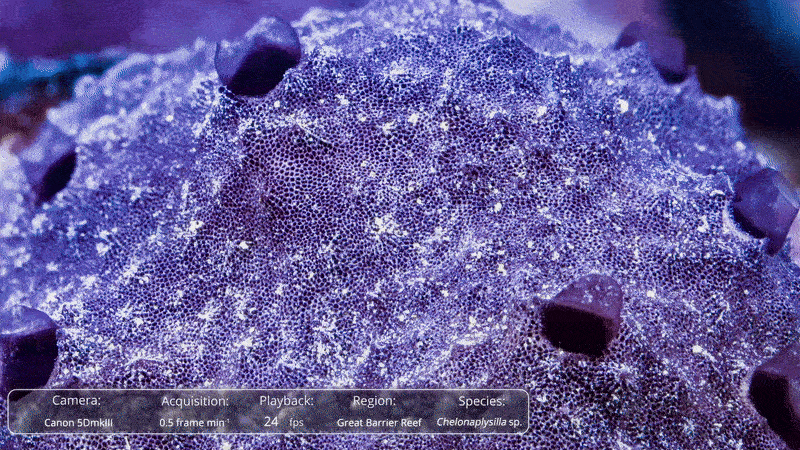Mollusks, Worms, Sponges, Starfish
Ocean Sponge Skeletons Suggest a More Significant History of Global Warming Than Originally Thought
Analysis of the sea creatures’ skeletal chemistry suggests the world’s temperatures have increased by 1.7 degrees Celsius since pre-industrial times
Hermit Crabs Are Using Trash as Shells Across the World, Scientists Find
Researchers analyzed photographs of the crustaceans online, identifying nearly 400 examples of artificial shells, which were often plastic bottle caps
This Eight-Day Festival Celebrates One of Alaska's Weirdest Worms
Welcome to the Cordova Ice Worm Festival, a quirky local tradition honoring the mysterious creatures that live in glacial ice
A Starfish 'Body' Is Just One Giant Head, Study Finds
Genes associated with the torso are largely absent in a species of starfish, upending how scientists perceive these creatures
Parasitic, Invasive Worm Found in Rats in Georgia
While the worm can sicken people, few human infections have been reported in the U.S., and it typically doesn’t require treatment
What's Killing Minnesota's Moose? Studies Reveal Sites of Deadly Brainworm Transmission
Carried by deer and spread by snails and slugs, a lethal parasite is infecting the large ungulates, which have recently declined dramatically
Doctors Pulled a Wriggling, Three-Inch Worm From a Woman's Brain
The incident in Australia is the first known occurrence of the roundworm—typically found in snakes—infecting the brain of a mammal
200-Million-Year-Old Poop Reveals Parasites That Infected a Crocodile-Like Reptile
The prehistoric fossil could help researchers understand the relationships between parasites and host organisms in the Late Triassic
Scientists Revive 46,000-Year-Old Roundworms From Siberian Permafrost
The nematodes had survived in a state of slowed metabolism called cryptobiosis, according to a new paper
Giant Snails Take Over Part of Florida—Again
Officials issued a quarantine to control the invasive species, which devours vegetation, damages structures and can carry a parasite dangerous to humans
Rare 'Technicolor' Rainbow Sea Slug Found in England
It's only the fourth record of the species in the U.K., and experts say it's a sign of warming waters due to climate change
Comb Jellies May Be the World's Oldest Animal Group
A new study suggests that ancestors of comb jellies, not sponges, were the first to break off from the common ancestor of all animals
Scientists Reintroduce 5,000 Snails to French Polynesian Islands
The project's organizers say it's the largest-ever release of creatures that are extinct in the wild
Humans May Have Eaten Giant Snails 170,000 Years Ago
Shell fragments from a cave in southern Africa show signs of exposure to extreme heat, suggesting they were cooked
How Lunar Cycles Guide the Spawning of Sea Creatures
Researchers are starting to understand the biological rhythms that sync worms and corals to phases of the moon
Researchers Find Living Clam Thought to Have Gone Extinct Thousands of Years Ago
While looking for sea slugs in California, a marine ecologist came across the tiny, ten-millimeter mollusks
Mysterious ‘Alien Goldfish’ May Have Been a Mollusk
The bizarre creature’s anatomy had stumped scientists for decades
Nine-Year-Old Finds a Three-Foot-Long Earthworm in His Backyard
The New Zealand boy named the creature “Dead Fred”
Sea Sponges Sneeze Sediment-filled Snot
New research reveals the animals expel mucus as a form of self-cleaning and other creatures eat the stuff up
Scars on Snails Offer a 100,000-Year Record of Crab Populations
A surprisingly simple technique for studying marks on shells shows how California’s crab population has changed over millennia
Page 1 of 6
:focal(1018x679:1019x680)/https://tf-cmsv2-smithsonianmag-media.s3.amazonaws.com/filer_public/92/72/92724eab-a5ad-4096-b776-f60a9353677b/5278175066_1370d67ff4_o.jpg)
:focal(310x220:311x221)/https://tf-cmsv2-smithsonianmag-media.s3.amazonaws.com/filer_public/d0/b9/d0b9ad20-8d78-4ca5-acc2-c841336d3e97/hermitcrab3.png)
:focal(2016x1517:2017x1518)/https://tf-cmsv2-smithsonianmag-media.s3.amazonaws.com/filer_public/95/08/9508d230-a5ed-4a5d-a3ce-53d0017442e1/scotthotaling_6_copy.jpg)
:focal(350x263:351x264)/https://tf-cmsv2-smithsonianmag-media.s3.amazonaws.com/filer_public/82/98/8298ef07-c99c-4da4-8195-d721ff9e7fe7/low-res_gene_expression_patchwork_from_the_paper.png)
:focal(1250x881:1251x882)/https://tf-cmsv2-smithsonianmag-media.s3.amazonaws.com/filer_public/47/8e/478e5b0c-43fa-41fa-bb6f-6b7b707d35d8/gettyimages-51632741.jpg)
:focal(1322x806:1323x807)/https://tf-cmsv2-smithsonianmag-media.s3.amazonaws.com/filer_public/73/06/73065e6b-1740-4600-ab91-24f007a04bb3/74f79759-bcee-4dde-b0cc-95949c525485original.jpg)
:focal(583x288:584x289)/https://tf-cmsv2-smithsonianmag-media.s3.amazonaws.com/filer_public/1e/27/1e2726be-ed90-45f5-959d-212ef00d6c3d/screen_shot_2023-08-29_at_105948_am.png)
:focal(350x233:351x234)/https://tf-cmsv2-smithsonianmag-media.s3.amazonaws.com/filer_public/e1/0f/e10f0665-9236-410b-8543-fa3b02e0edb1/low-res_fig1.jpg)
:focal(2264x1509:2265x1510)/https://tf-cmsv2-smithsonianmag-media.s3.amazonaws.com/filer_public/d2/e2/d2e22cdf-0530-4db2-afa9-a4f47142eda0/gettyimages-1190593824.jpg)
:focal(376x261:377x262)/https://tf-cmsv2-smithsonianmag-media.s3.amazonaws.com/filer_public/78/e6/78e67063-be79-4eb5-acf5-eaa33fbd8dea/5502140-ppt_cropped.jpg)
:focal(2510x1410:2511x1411)/https://tf-cmsv2-smithsonianmag-media.s3.amazonaws.com/filer_public/bb/18/bb181e54-9792-430d-bb01-c7ee1cdd9526/2r1p978.jpg)
:focal(375x250:376x251)/https://tf-cmsv2-smithsonianmag-media.s3.amazonaws.com/filer_public/4c/10/4c109f93-330a-495d-b876-afc0d83aabb7/hormiphora_californensis_darrin_schultz_mbari_750px.jpg)
:focal(960x544:961x545)/https://tf-cmsv2-smithsonianmag-media.s3.amazonaws.com/filer_public/c4/9a/c49a4f12-c8a3-4bf4-bbb0-6932d701f1a7/partula_20snail_20website_20two.png)
:focal(1272x969:1273x970)/https://tf-cmsv2-smithsonianmag-media.s3.amazonaws.com/filer_public/d6/dd/d6dd991b-9ae6-475f-9884-528d6dd837b8/gettyimages-482129088.jpg)
:focal(800x602:801x603)/https://tf-cmsv2-smithsonianmag-media.s3.amazonaws.com/filer_public/d2/8a/d28a9303-1b11-424c-8e06-a42087e62255/coral-spawning_web.jpg)
:focal(1947x1168:1948x1169)/https://tf-cmsv2-smithsonianmag-media.s3.amazonaws.com/filer_public/32/9e/329ee5e0-5006-4306-960c-ac3018023e22/cymatioa_cooki_rainbow.jpg)
:focal(512x512:513x513)/https://tf-cmsv2-smithsonianmag-media.s3.amazonaws.com/filer_public/a9/b4/a9b45f81-39d6-4641-ad5e-f311cca70987/20tb-fossil1-jumbo.jpg)
:focal(620x351:621x352)/https://tf-cmsv2-smithsonianmag-media.s3.amazonaws.com/filer_public/52/27/522721a8-2be6-4555-a7d4-5932554adec1/1662482079684.jpg)

:focal(800x602:801x603)/https://tf-cmsv2-smithsonianmag-media.s3.amazonaws.com/filer_public/c0/7d/c07d1618-c39d-48a3-9d88-f9806e7d7c0a/gettyimages-1315209249_web.jpg)